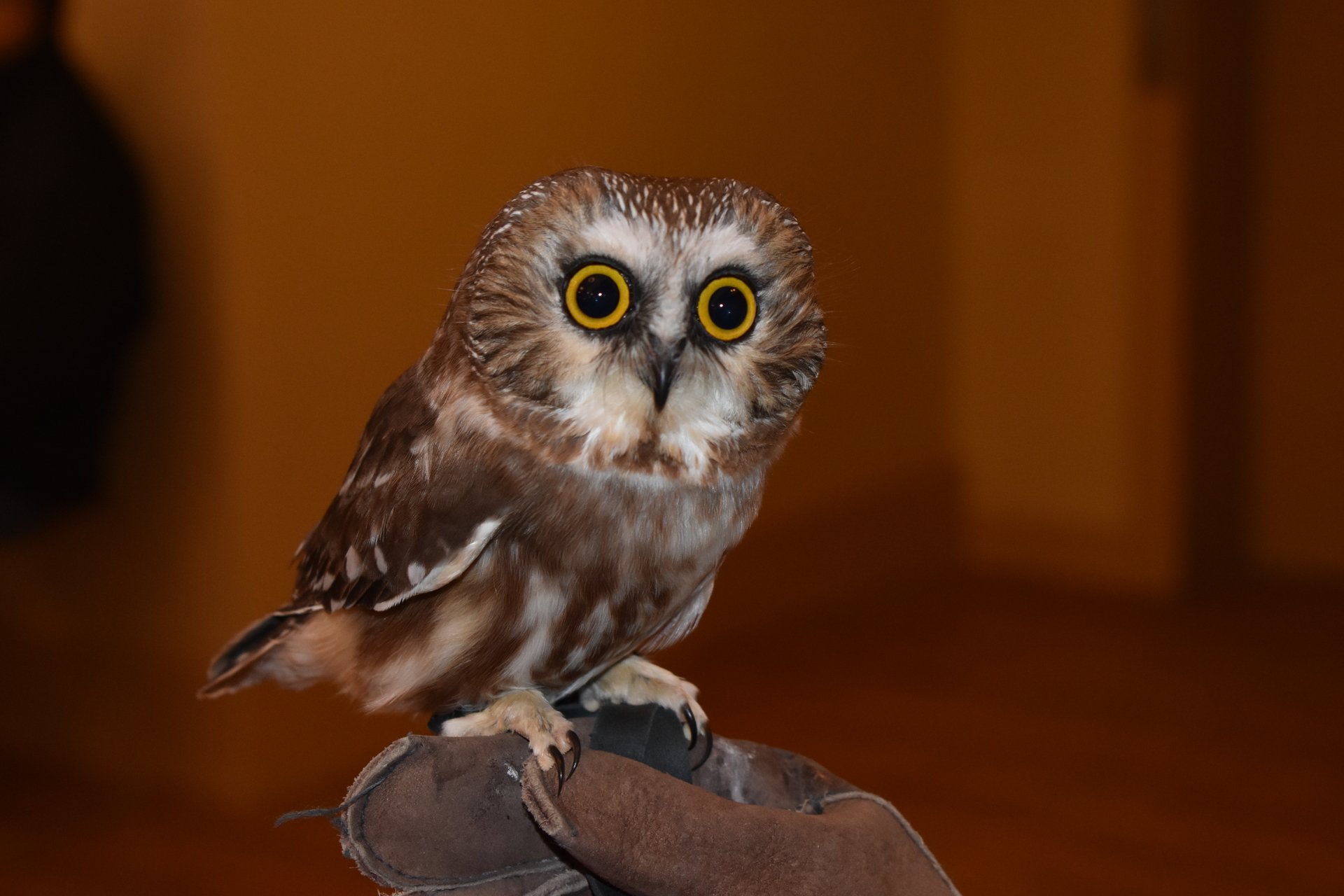Small Owl, Big Impact: Saw-whet Owl Banding at Mass Audubon
October 01, 2019
In the dead of night, at the edge of a grove of white pine, a tiny but deadly predator sits silently, nearly invisible on a low branch. Something stirs below. A vole appears, scurrying hurriedly from tree root to tree root in search of seeds and other morsels of food. Spreading its diminutive wings, the raptor swoops down and cleanly snatches the vole in its talons, securing a meal for itself with hardly a sound.
Weighing in at only 2–4 ounces, with an average wingspan of 17–19 inches, Northern Saw-whet Owls are the smallest owls in the eastern United States. Roughly the size of a robin, they are mottled brown birds with round heads and whitish faces, and they lack the signature ear tufts of Eastern Screech and Great Horned owls.
They eat mostly small mammals but will supplement their diets with small birds and even insects. The name Saw-whet comes from the sound of one of the bird's calls—"the sound of its love-notes bearing a great resemblance to the noise produced by filing the teeth of a large saw," as John James Audubon once wrote.
Abundant but elusive, they are almost exclusively nocturnal and not especially vocal, so they're rarely seen (or heard) in the wild. Thankfully, a longstanding banding program led by Mass Audubon volunteers and staff has been tracking their movements since 1994, providing valuable data on their population numbers and migration patterns.
Saw-whet Owl banding in New England started at Daniel Webster Wildlife Sanctuary as a four-year science fair project by Blue Hills Trailside Museum Director Norman Smith's daughter, Danielle. Her project showed that Saw-whet Owls, thought to be rare in the state, were the most abundant owl species during the fall. For her efforts, Danielle received a second-place award at the Massachusetts State Science Fair at MIT.
In collaboration with Project Owlnet—a network of Saw-whet Owl banding stations throughout the United States and Canada—volunteer crews at Drumlin Farm in Lincoln, Moose Hill in Sharon, and Daniel Webster in Marshfield run "mist-netting" operations to band Northern Saw-whet Owls and monitor their migration each fall. Mist nets are a special tool used by researchers to safely capture birds to study and band them before returning them to the wild.
This article was featured in the Fall 2019 issue of Explore, Mass Audubon's quarterly member newsletter.
Stay Connected
Don't miss a beat on all the ways you can get outdoors, celebrate nature, and get involved.



